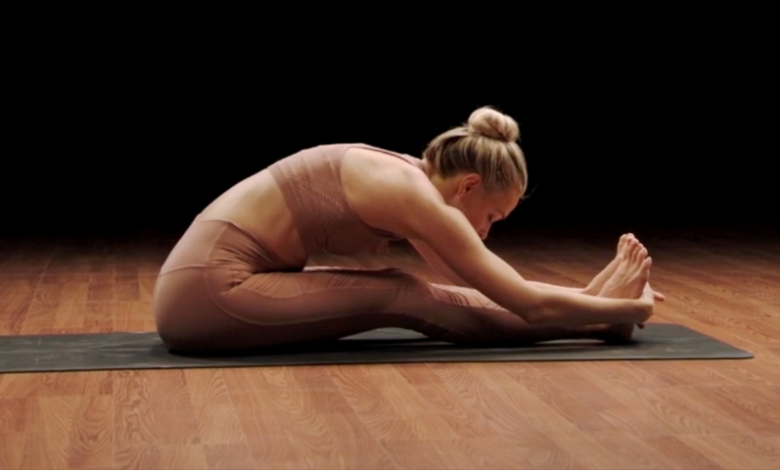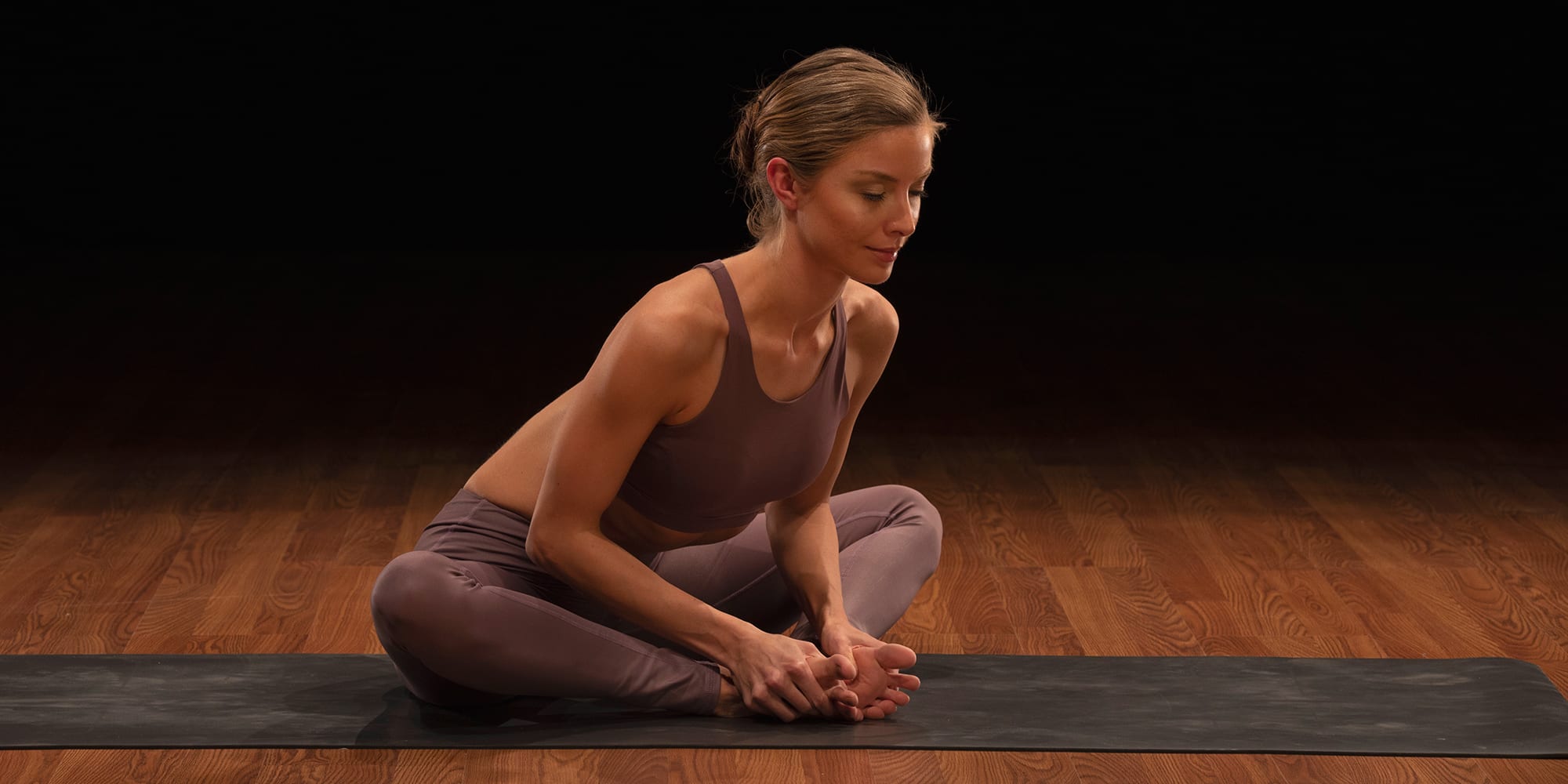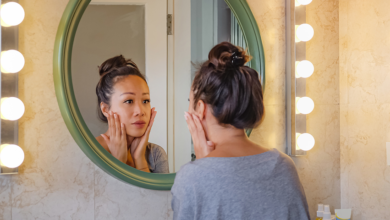How to Do Seated Forward Bend in Yoga (Paschimottanasana)

As a yoga teacher and naturally flexible person, I’m often told by people that they don’t practice yoga because they’re not flexible. But that’s why you practice yoga! Among my favorite poses to increase flexibility is the seated forward bend, known also by its Sanskrit name paschimottanasana. (Pronounced PAH-she-moh-ton-AHS-uh-nuh.)
Seated forward bend may not look like much in a single still image. But what you can’t see is how this stretch benefits so many different parts of your body.
“Paschimottanasana stretches the entire backside of the body, which is a continuous chain of fascia and muscle,” says Stephanie Saunders, vice president of fitness programming for BODi. So it’s much more than just a hamstring stretch.
Read to learn how to master this beneficial basic pose.
Seated Forward Bend (Paschimottanasana): Step-by-Step Instructions
- Start in staff pose: Sit up tall on the floor with your legs extended together in front of you, your feet flexed, and your toes pointed toward the ceiling. Your hands should rest on your thighs or the floor beside them.
- Drawing your abs inward and hinging at your hips — not your waist — lean forward, and slowly walk your hands down your legs, toward your feet. Avoid excess rounding in your back or using your arms to pull yourself into the pose.
- Grab your big toes, the sides of your feet, shins, ankles — whatever your flexibility allows, without forcing it — and rest in the pose while maintaining a neutral spine.
- Hold for five or more breaths. With each exhale, try to relax into the posture to get a deeper stretch.
How to Make Seated Forward Bend Easier
Paschimottanasana is an intense stretch that can be made comfortable for everyone, even beginners. Modifying the seated forward fold won’t reduce its benefits but rather make it more accessible.
- “If you have tightness in your hamstrings or hips, getting a release in your lower back might require you to elevate your hips (by sitting on a yoga block or folded blanket), or put a bend in your knees,” says Saunders.
- “If the tightness is in your back, try reaching out with an extended spine before relaxing forward, use a block on either side of your knees to support your arms, and trust gravity to do the rest,” she says.
- You can also separate your legs so your heels are hip-distance apart. This should leave more room for your chest and belly.
How to Make Seated Forward Bend Harder

Seated forward fold is an intense backside stretch. For those with flexible hamstrings and no lower-back pain, it’s possible to intensify the posture.
- Flex your toes with straightened legs, and you can intensify the stretch in your hamstrings.
- Hold a yoga block in place against the soles of your feet to deepen the stretch.
Beginner Tips for Doing Seated Forward Bend
Paschimottanasana isn’t about depth. Many beginners think they need to keep their legs straight and touch their nose to their knees to “accomplish” this pose.
In reality, maintaining a neutral spine and bent knees is safer and just as “correct.” Rounding your spine to bring your nose to your knees can cause lower back pain and compression. Instead, focus on resting your upper body on your thighs.
When you begin practicing seated forward fold, it’s important to listen to your body and breathe. If you can’t maintain the posture through three long breaths, you may have gone too deep, too fast. Take your time finding your depth in this pose. Stay, breathe, deepen.
Benefits of Seated Forward Bend
Paschimottanasana is a simple pose with a wide range of benefits.
- Stretches the backside of your body from heels to head
- Helps promote lengthening of the spine
- Creates inner calm through breath
Seated Forward Bend Variations
If you’re looking for other types of bends that provide slightly different stretches, here are some to try.
1. Standing forward bend (Uttanasana)

- Start at the top of your mat in mountain pose. Inhale, and raise your arms straight up turning the triceps forward. Exhale, hinge at your hips and reach for the floor.
- Bend your knees slightly, fold your torso over your legs, and lengthen your spine the whole way down.
- Bring either your fingertips or palms to the floor, fingers in line with your toes.
- Look toward your legs. Spiral your shoulders to the sides and away from your ears.
- Lift the arches of the feet. Engage the legs by lifting the kneecaps.
- Lift your tailbone up toward the ceiling as you rotate your thighs inward.
- Shift your weight slightly forward on your feet so your hips align over your heels.
- If you can, begin to straighten your legs.
2. Bound-angle pose (Baddha konasana)

- Sit on the floor with your butt bones directly beneath you. (This keeps you from tucking your tailbone.)
- Bring the soles of your feet together, letting your knees fall to the sides. The outer edges of your feet should touch.
- Draw your heels as close to your groin as is comfortable.
- Place your thumbs on the balls of your feet, and wrap the rest of your fingers around the tops of your toes, as if holding an open book.
- Maintaining a tall spine, fold forward without excessively rounding your back or letting your knees roll forward. Hold for at least five breaths or up to one minute.
3. Seated wide leg forward bend (Upavistha konasana)

- Start in staff pose: Sit up tall on the floor with your legs extended together in front of you, your feet flexed, and your toes pointed toward the ceiling. Your hands should rest on your thighs or the floor beside them.
- Open your legs as wide as comfortably possible, with your feet flexed and toes pointed toward the ceiling.
- Making sure not to let your back round, hinge at your hips and slowly walk your hands forward. Hold for 30 to 60 seconds.



